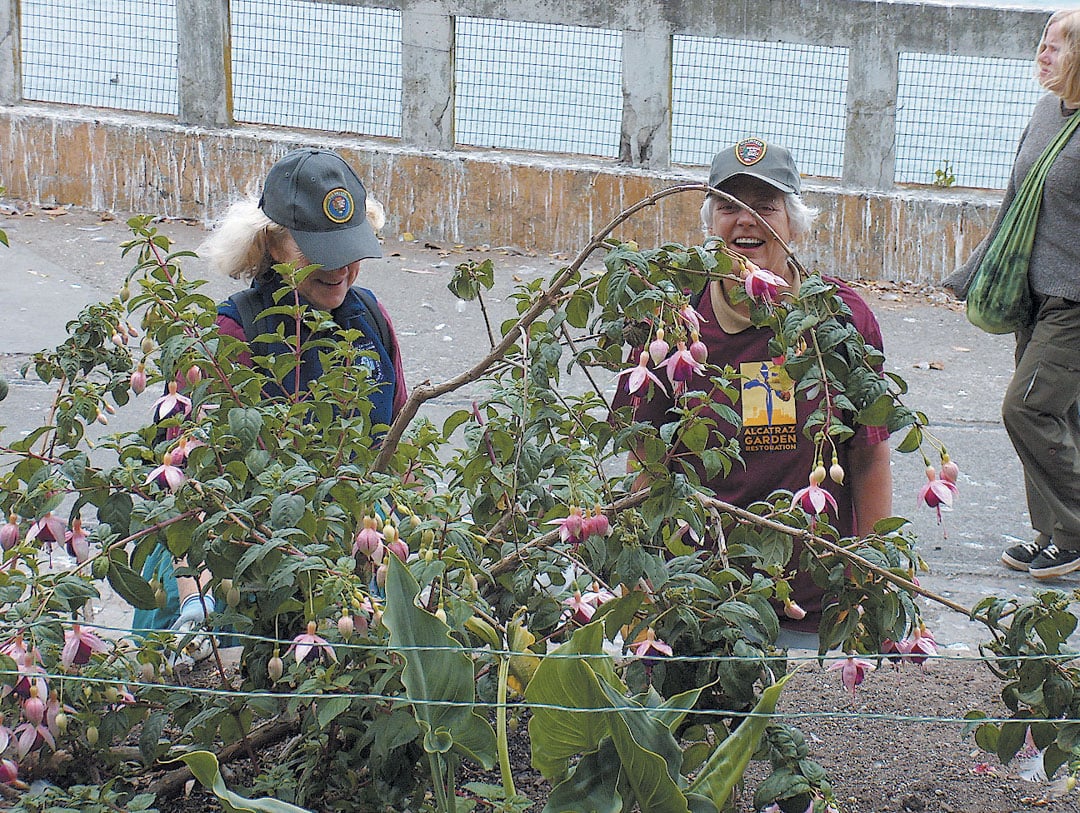

Contributor
- Topics: Archive

From the mid-1800s until 1963, residents of Alcatraz Island (military personnel and their families, military prisoners, civilian prisoners, and prison staff and their families) brought plants and built gardens that helped them to deal with the challenges of life on this harsh island in the middle of San Francisco Bay. Once the federal penitentiary closed in 1963, little was done to maintain these gardens. In 1992, the Olmsted Center for Landscape Preservation, in collaboration with the Golden Gate National Parks Conservancy (GGNPC) and the Golden Gate National Recreation Area (GGNRA), prepared a stabilization report for the island’s gardens, but no funding was available for implementation of the plans.
In 2003, the Garden Conservancy joined forces with the GGNPC and the GGNRA to restore the gardens of Alcatraz Island. In October, I was hired to organize, train, and supervise a once-weekly volunteer gardening crew to begin work on the island. We removed small mountains of invasive weeds and began to update the plant inventory. We maintained newly uncovered gardens, in addition to nurturing and propagating plants in danger of being lost. Each week, we discovered additional garden structures: paths, stepping stones, masonry edgings of beds, retaining walls, and long defunct pipes, hose bibs, and tool storage areas.
In September, 2004, the project received a huge boost with the full-time placement at Alcatraz of Carola Ashford, the Marco Polo Stufano Garden Conservancy Fellow for 2004-2005. We added a second weekly volunteer morning, and Carola devoted many hours to research, documentation, and planning. Through her efforts, important historic photographs were added to the collections greatly aiding the planning process. She developed a photo chronology of the gardens, and drew plans for temporary nursery beds, built by the San Francisco Job Corps’s apprentice carpenters.
The GGNRA requested a new Cultural Landscape Inventory (CLI) of the island to meet the requirements of the Secretary of the Interior’s Standards for Historic Landscape Preservation. Denise Bradley, a landscape architectural historian, was hired to produce the report, with help from the volunteer gardeners, who shifted into high gear in autumn to clear those garden areas that are closed each year from February to September to protect the nests of thousands of shore birds. The clearing allowed Denise to document the condition of the hardscape and allowed us to inventory the surviving garden plants for inclusion in the CLI.
With the CLI in place in 2005, we moved from clearing and stabilization to rehabilitation of the gardens. The initial plan covers the gardens along the main road, from the dock to the cellhouse, where we repaired a 330-foot planter, installed drip irrigation, and, based upon an historic photograph, planted it with three heirloom cultivars of ivy geranium (Pelargonium peltatum). The satisfaction of actually beginning restoration planting after two years of hard work is inexpressible.
We extend heartfelt thanks to our many volunteers and to our generous donors, including the California Horticultural Society, Fernleigh Foundation, National Trust for Historic Preservation, National Park Foundation, REI, San Francisco Garden Club, and Tauck Foundation.
We always welcome new volunteers; contact dlindsay@parksconservancy.org or cashford@parksconservancy.org. To learn more about the project, visit www.gardenconservancy.org and www.parksconservancy.org or call (415) 4R-PARKS.








Responses